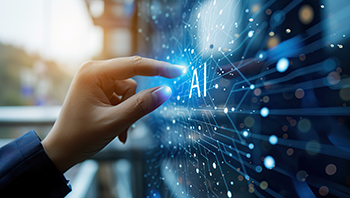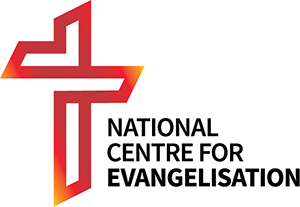We’ve heard a lot about artificial intelligence (AI), its limitless potential and the dangers it poses. But what has the Church said about AI and how it should be used?
Long before the world first saw ChatGPT in November 2022, the Church was already anticipating rapid growth in AI technology. In February 2020, the Pontifical Academy for Life held the ‘RenAIssance: For a Human-centric Artificial Intelligence’ conference in Rome, where tech giants such as IBM and Microsoft signed the Rome Call for AI Ethics – a document pledging an ethical approach to AI. In a message for the conference, Pope Francis made his first remarks about AI, saying such technologies pose “grave risks” but also have “immense potential” to “bear good fruits”.
As AI technology developed and interest in it grew exponentially, Pope Francis became an increasingly vocal proponent of the need to develop policies and regulations that would keep AI at the service of humanity.
 In March 2023, an AI-generated image of Pope Francis sporting a stylish white puffer jacket went viral online, prompting a much wider discussion at all levels about the ethics of AI technology use. Just a few days later, he again spoke on AI to a group of technology leaders, encouraging them to “make the intrinsic dignity of every man and every woman the key criterion in evaluating emerging technologies; these will prove ethically sound to the extent that they help respect that dignity and increase its expression at every level of human life”.
In March 2023, an AI-generated image of Pope Francis sporting a stylish white puffer jacket went viral online, prompting a much wider discussion at all levels about the ethics of AI technology use. Just a few days later, he again spoke on AI to a group of technology leaders, encouraging them to “make the intrinsic dignity of every man and every woman the key criterion in evaluating emerging technologies; these will prove ethically sound to the extent that they help respect that dignity and increase its expression at every level of human life”.
The Pope’s message for the 2024 World Day of Peace, released in December 2023, focussed on AI and allowed the Holy Father to more deeply explore some of his concerns regarding the use of AI technology. The message specifically addressed the potential for AI to be used in the development of autonomous weapon systems, and the challenges it poses to education, employment and communication.
Perhaps the Church’s most significant contribution to the AI discussion came in June 2024, when Pope Francis spoke to world leaders at the G7 Summit. It was also the first time a pope had attended the G7 meeting in its 50-year history.
In his address, Pope Francis described AI as “an exciting and fearsome tool”, which, like all human tools, will bring about harm or benefit depending upon how it is used. “It is up to everyone to make good use of it but the onus is on politics to create the conditions for such good use to be possible and fruitful,” he told the leaders.
Antiqua et Nova
Many of the issues highlighted by Pope Francis were explored in greater detail in the January 2025 doctrinal note, Antiqua et Nova, co-authored by the Dicastery for the Doctrine of the Faith and the Dicastery for Culture and Education.
The document is a comprehensive exploration of artificial intelligence and how it is affecting, and may affect, individuals and society, especially in the moral and spiritual realms.
Outside of its introduction and conclusion, Antiqua et Nova is divided into four main sections:
- What is Artificial Intelligence?
- Intelligence in the Philosophical and Theological Tradition
- The Role of Ethics in Guiding the Development and Use of AI
- Specific Questions
 Prior to diving into the topic, the document first demonstrates how science and technological advancement are indeed good in themselves when used to glorify God. They are part of life, and part of human development.
Prior to diving into the topic, the document first demonstrates how science and technological advancement are indeed good in themselves when used to glorify God. They are part of life, and part of human development.
The first section begins by outlining what exactly artificial intelligence is and how it has developed over time, arguing that the “intelligence” offered by AI is not on the same level as human intelligence: “AI’s advanced features give it sophisticated abilities to perform tasks, but not the ability to think.” Human intelligence is based on far more than computational data, and the unique physical experiences that a human has provide individuals with a level of intelligence that cannot be replicated in a machine.
Human intelligence, the document states, “is shaped by embodied experiences, including sensory input, emotional responses, social interactions, and the unique context of each moment”, making it “fundamentally different” to the so-called intelligence of AI’s computational abilities, which “represent only a fraction of the broader capacities of the human mind”.
The second section reflects on the Church’s understanding of intelligence and knowledge over time, so as to juxtapose this understanding with what AI pretends to be able to offer.
In the third section, the importance of developing ethical guidelines for the use of AI is explored. The underlying principle, the document asserts, should be a commitment to ensuring “AI always supports and promotes the supreme value of the dignity of every human being and the fullness of the human vocation”. There is a type of shared responsibility for the impact AI has between the developer and the end user, as both parties play a role in determining what the AI produces.
The last section provides a brief glimpse into the role of AI in various fields of life, such as work, education, healthcare and human relationships, offering some examples of ways in which it could be used for good and then highlighting the many areas of risk and concern when AI is misused. The negative uses of AI listed in each section far outweigh the positive uses, giving the document an overall sense of caution.
The document concludes by warning of AI (and technology in general) becoming a false god for humanity; another idol of worship which is, in essence, humanity’s deification of itself.
Antiqua et Nova builds upon previous Papal statements on AI, echoing the same cautionary tone of Pope Francis. A clear theme throughout all of the aforementioned speeches and documents is that the Church is generally wary of AI being used in ways that damage human dignity.
In his first two addresses, Pope Leo XIV has also highlighted artificial intelligence, demonstrating an awareness that the development of the technology may be the defining moral and ethical challenge for the world in the coming years.
Until governments and organisations implement ethical procedures for the use of AI – as Pope Francis called for on multiple occasions – the Church’s cautionary tone will likely continue.
Further Reading
Message of Pope Francis for the 57th World Day of Peace (1 January, 2024)
Antiqua et Nova: Note on the Relationship Between Artificial Intelligence and Human Intelligence (Dicastery for the Doctrine of the Faith, Dicastery for Culture and Education, 14 January, 2025)
Words: Matthew Biddle
Images: Wikimedia Commons; Lightstock



